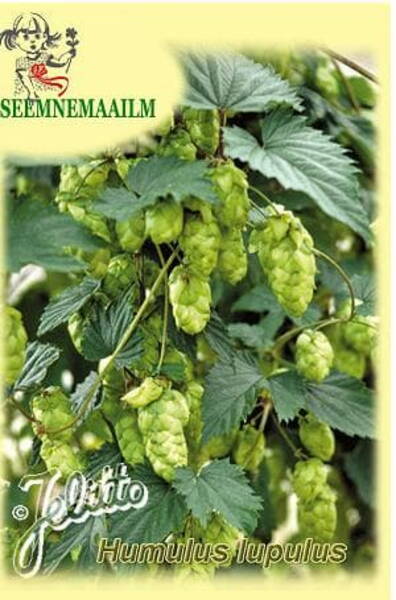Climbing; officinal (medicinal) plant; beneficial plant.
VII-IX, Z4-9, 200-500 cm;
Hops, greenish-yellow, hanging flowers, green foliage.
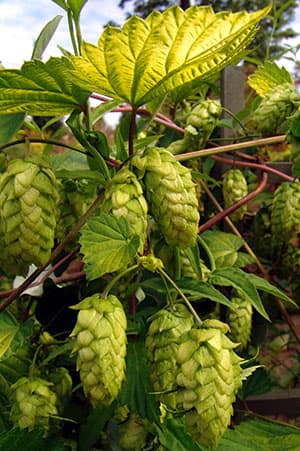
Family: Cannabidaceae
Origin: Europe, North America and Asia
Special Features: Attractive "cone-like" seeds on female plants
History: Female plants are the source of hops, one of the principal ingredients of beer. Humulus is also related to cannabis
Colour: Straw-colored flowering bracts
Natural Flowering Period: July - September
Winter Hardiness Zones: Z4-9
Growth Habit: Twining
Foliage: Opposite leaves with 3-5 lobes and bristly stems
Spacing between Plants: 100 cm
Soil Requirements: Deep loamy to sandy soil, pH 5.5 - 7.0
Location: Full sun
Use: Plant on fence posts or trellises with Andropogon "Prairie Blues" Anemone nemorosa and Echinacea "Rubinstern"
Specialities: Medicinal values. Also available as normal seeds
Cultural Tips:
Grams per 1000 Seeds: 2,778
Seeds per Gram: 360
Seeding Recommendation: 5 g / 1000 plants
Sowing Rate: 3 seeds per cell
Plug tray recommended size(s): 72 or 128
Germination: germinate after 3 - 4 weeks, keep seed in constant moisture (not wet) with temperatures of about + 20°C. Seeds must be covered thinly. After germination, the seedlings must be kept cool (+5 to 10°C) in the months with less daylight hours, but must not be exposed to frost. At this time, it is of great benefit if the seedlings can receive at least 12 hours of light per day.
Scheduling:
Best Sowing Dates: Anytime
Sowing to Germination: 3 - 4 weeks
Germination to Transplant: 3 - 4 weeks
Transplanting to Salable Plant: 6 - 8 weeks
Cutting-Back at Transplanting: Cut-back once to keep more compact
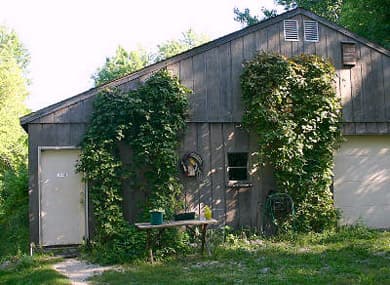
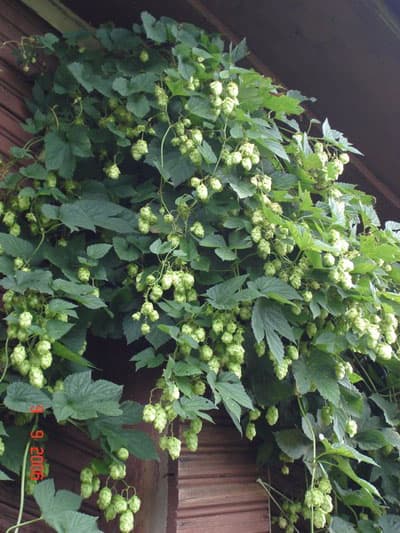
Sowing: February-March for seedlings, April-May in open ground or before winter to a depth of no more than 0.5 cm. Seeds require preliminary stratification: sow the seeds to a depth of no more than 0.5 cm, moisten with a spray bottle, cover with glass and place in the refrigerator (temperature +5+7°C). The crops are kept in such conditions for a month, then transferred to room conditions. It is necessary to monitor crop moisture and ventilation. At a temperature of +18+20°C, seedlings appear on days 14-20. Seedlings dive in the phase of 2-3 pairs of true leaves. If there is no germination, repeat the “cold-heat” process in the same sequence.
In open ground, seedlings are planted at a distance of 50-90 cm between plants.
Care: prefers bright, warm places and light, well-drained soil. Does not tolerate waterlogging and stagnant water.
Care consists of periodic watering, fertilizing and loosening the soil.
Flowering: July-August the following year. Hops bloom for a long time, from July to the end of August.
At the end of flowering, small golden-yellow bubbles are easily visible on the scales, stem and ovary. These are lupulin glands for which people have been growing hops since ancient times.
They put this spice in kvass for flavouring. In baking, it can replace yeast. Ripe hop cones are so rich in lupulin that when touched, yellow powder literally pours out of them. These are lupulin grains.
As soon as the cones begin to emit a delicate aroma and the scales noticeably lighten, it’s time to start harvesting the hops.
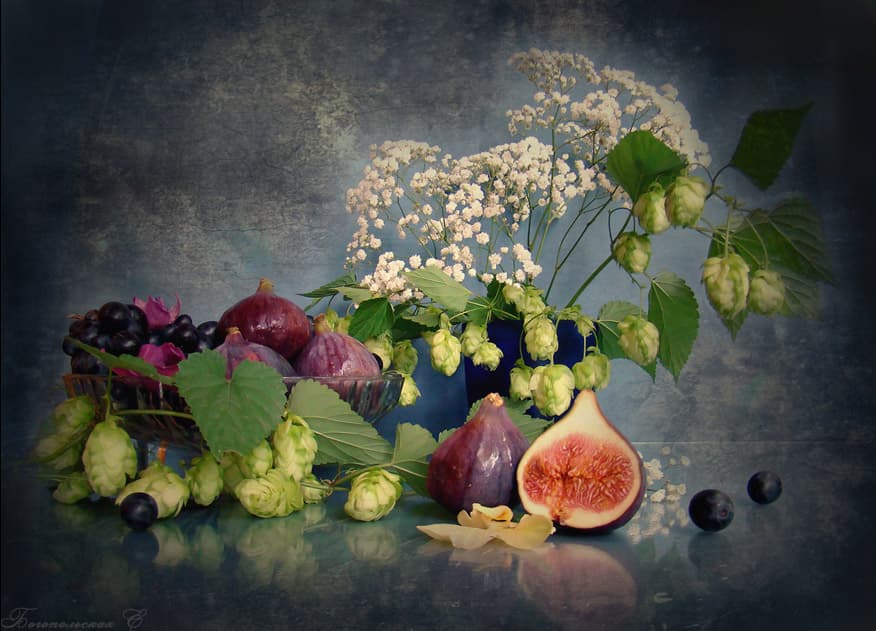
Common hop, hops. Bot. syn.: Humulus americanus Nutt.









